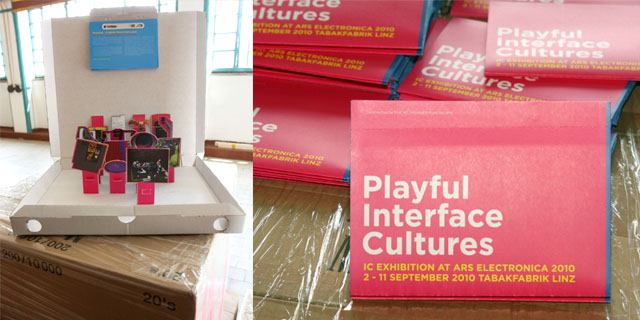I spent a wonderful week in beautiful Sofia at the second edition of the Digital Art Festival. It was a small, but fantastic event organized by the National Academy of Art in Sofia. Apart from the professional and very nice team i met a lot of interesting artists like Paul Granjon, who´s hilarious approach to human<>machine interaction inspires me a lot, or Mark Coniglio who held a workshop with his Software “Isadora” – the first SW i paid for and worked a lot for live visuals and video-dance-performances. I also got to know Reynold Reynolds, a fascinating film maker who studied at Stan Brakhage and his very distinctive philosophical visual language is just breathtaking. He exhibited his two screen video installation “six appartments“, which won last years distinction award at the Transmediale.
Oh, and there was Brian Kneb, a very nice guy, who creates interactive installations with a great organic style. The way he works with code is fascinating. For me as a total rookie in coding it is such a mind twisting field of teaching a computer the rules and dynamics of nature. Super interesting was that out of his work with code and classical digital interaction he started some “real life” experiments with multicellular organism interacting with bacteria taken from his own body. I should not forget hexler, who exhibited a generative installation experimenting with the analysis of psychologist Hermann Rorschach. And besides some nice drinking and fun time together he managed to teach a processing workshop at the festival.
I had the pleasure to get a walk through the exhibition with the two main organizers and curators of the festival, Galina Dimitrova and Venelin Shurelov, who also teaches at the Digital Art Master Program of the Academy. The walk is splitted into two parts. The first is the main exhibition in the Gallery space and the second one presents student works from the Digital Art Program of the Academy, the Animated Film Department of Zagreb University and the Digital Art class of the University of Applied Arts in Vienna.
Something i have to point out is that most of the Presentations and Performances were streamed live and are available to watch on demand as well. Like this very interesting talk by Don Foresta about a “New Renaissance”
DA Fest 2010 Main Exibition Gallery:
DA Fest 2010 Student exhibition space:


Socialize